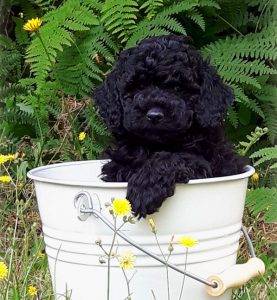
 The idea of adding a cute little puppy to your home can elicit feelings of excitement and joy. Keep in mind, though, that the reality of adding a puppy to your home is a lot different, because it requires work on your part. That dog can’t take care of itself. Are you truly prepared for the commitment and dedication needed to care for a pet on a daily basis?
The idea of adding a cute little puppy to your home can elicit feelings of excitement and joy. Keep in mind, though, that the reality of adding a puppy to your home is a lot different, because it requires work on your part. That dog can’t take care of itself. Are you truly prepared for the commitment and dedication needed to care for a pet on a daily basis?
Before adding a puppy to your home there are some things you should do to help ensure “it all works out” for both you and the dog.
Things to Do Before Adding a Puppy to Your Home
For starters, do research about the breed of dog you’re going to own and raise. Beforehand, it’s a good idea to read up on the breed’s “pros and cons,” so you know what you’re getting into… for instance, does the dog shed a lot? Are you going to be okay with taking your dog to the groomer often? Is the breed known for needing a lot of attention and are you prepared to give it a lot of attention? Read different books, visit different websites, and ask around. People will tell you their stories– good and bad– about different types of dogs. The more informed you are about the breed you’re interested in, the better puppy parent you’ll be.
Next, prepping the home for the arrival of the puppy is much like prepping it for a toddler. Put harmful items out of reach. Check and see if you own anything that could be potentially toxic to the dog if he/she chewed/ate it. If you have other people in your home besides you, discuss the addition of the dog with them and figure out who’ll be in charge of certain responsibilities. Ideally there should be one “master” for the dog– an adult who primarily cares for it, while other family members are helpers. Dogs are pack animals– they like having a “top dog” around.
Figure out where you’ll want the puppy to eat, sleep and play in the home. Section off certain areas where you don’t want the puppy to go– for example, put a gate up to keep the puppy off the really expensive carpet in the living room!
If there are little kids present, teach them about handling the puppy gently. They shouldn’t be making loud noises, shouting at the dog– that’ll scare it. They have to learn, with an adult’s guidance, how to play with the dog properly so no one gets hurt.
Finally, like with anything new, there’ll be an “adjustment period” for the puppy and its owners/caretakers. There may be crying. There may be poop on floors. And there may be bonding time,
too. Just like with toddlers, having a puppy in the house takes some getting used to, but ultimately it’s a great addition to the family!